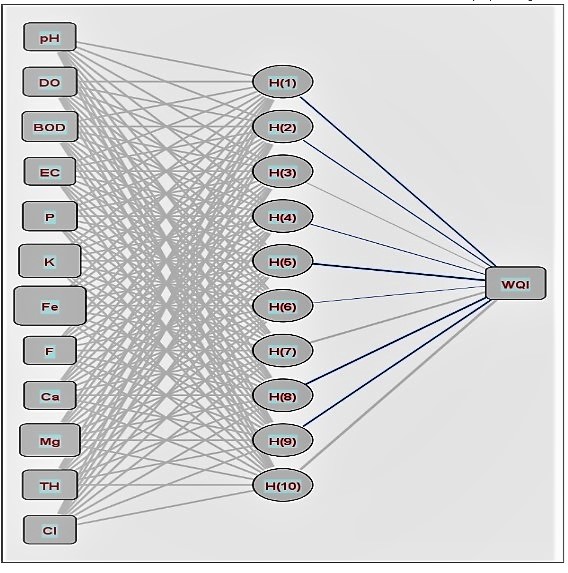
An approach was used in this study to relate the predicted and calculated water quality index (WQI) of the Brahmani River. The WQI was predicted using an artificial neural network (ANN) tool, and the weighted Arithmetic Index technique was used to calculate the WQI (WAI). The WQI is calculated using physicochemical parameters as input data. Pollution Control Board (India) data was utilised to train and evaluate the model, as well as to forecast WQI. The ANN model is trained using the feed-forward back-propogation approach. 70 percent of the data was used for training, whereas 30 percent was used for testing and validation (15 percent) (15 percent). The regression coefficients for all of the stations were greater than 0.9, indicating that ANN modelling produced successful results. For all stations, the average percent of variance between anticipated and computed WQI is 8.63 percent. According to the findings of this study, the ANN model may be useful for predicting the WQI of both surface and groundwater.
Total file downloads: 8